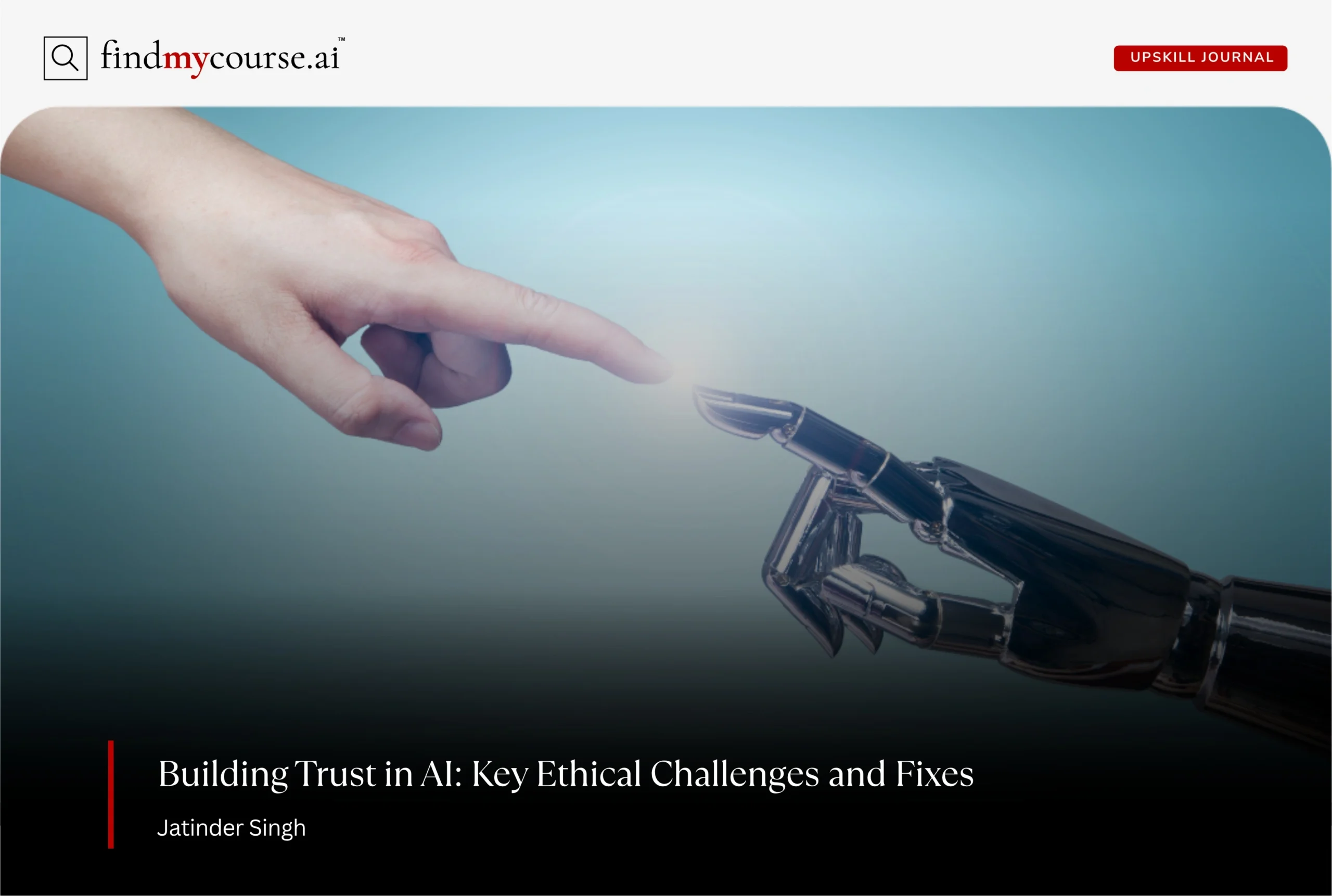Artificial Intelligence is transforming how we live, study, work, and connect—from personalized recommendations to medical diagnostics and autonomous vehicles. While the benefits are significant, the risks are just as real. When algorithms make decisions that impact real people, we must ask: Are those decisions fair? Are they explainable? Are they safe? These questions matter because AI already influences outcomes in hiring, healthcare, finance, and justice systems. At the heart of these concerns is ethics in AI: ensuring that it respects human values, protects rights, and benefits everyone—not just a privileged few.
In this article, we draw on real-world research, tools, and global frameworks to explore today’s most urgent ethical challenges in AI—and how to solve them with practical, proven strategies.
Why Ethics in AI Is So Important
AI is now embedded in decisions that shape lives—who gets hired, approved for a loan, diagnosed with an illness, or granted parole. These systems often reflect the biases, blind spots, and assumptions of the data and designers behind them. Without strong ethical foundations, AI can cause large-scale harm—amplifying discrimination, compromising privacy, spreading misinformation, and reinforcing existing inequalities. This isn’t speculative. It’s already happening, as seen in real-world failures like biased facial recognition, unjust predictive policing systems such as COMPAS, and discriminatory hiring algorithms.
Ethics in AI is not just a technical challenge—it’s a societal imperative. It’s about building systems that are fair, accountable, and aligned with the public good. The decisions we make now will shape not just the future of technology, but the future of trust, rights, and democracy.
Major Ethical Issues in AI—and How to Solve Them
Ethics in AI raises urgent questions that demand proactive solutions. From bias and privacy to misinformation and job disruption, these challenges affect individuals, communities, and entire societies. Tackling them requires more than good intentions—it takes thoughtful design, robust governance, and a human-first mindset.
1. Bias in AI → Build Fairness Into Design
AI systems learn from past data, but if that data reflects existing biases, the AI will repeat them. For example, hiring records favoring certain genders or races can lead to unfair outcomes. This can cause discrimination and widen social inequalities. This is especially harmful in areas like hiring, lending, and policing, where biased AI can unfairly affect people’s lives. Without addressing bias early, AI risks reinforcing unfair treatment on a large scale.
To prevent this, fairness must be part of AI design from the beginning. That means using diverse datasets, running bias detection tests, and involving diverse teams including ethicists and users. Some helpful tools and approaches include:
- IBM’s AI Fairness 360, which detects and mitigates bias.
- Google’s What-If Tool, which helps analyze model behavior.
- Regular fairness assessments during AI development.
Building fairness into AI helps create systems that work well for everyone, not just a few.
2. Lack of Transparency → Use Explainable AI Tools
Many AI systems act like “black boxes” — they make decisions but don’t explain how or why. This makes it hard to trust or challenge those decisions, especially in sensitive areas like healthcare, finance, or criminal justice. Without transparency, mistakes can go unnoticed and unfair outcomes can persist. People affected by AI deserve to understand how decisions that impact them are made.
The solution is Explainable AI, which makes AI decision-making clearer and easier to understand. Some common tools are:
- SHAP, which shows how important each factor is in a decision.
- LIME, which explains predictions locally in simple terms.
- Clear documentation and visual reports that make AI models more transparent.
Using these tools helps build trust and accountability, ensuring AI decisions can be reviewed and improved.
3. Privacy Risks → Adopt Privacy-by-Design Techniques
AI often relies on large amounts of personal data, which raises concerns about privacy and misuse. Without strong protections, this data can be leaked, abused, or used for surveillance. Privacy risks are especially high in areas like healthcare and finance, where sensitive data is involved. People need assurance that their personal information is safe and handled responsibly.
Privacy-by-design embeds data protection throughout AI development. Some key techniques include:
- Federated learning, which trains AI models without moving data off users’ devices.
- Differential privacy, which adds “noise” to data to prevent identifying individuals.
- Homomorphic encryption, which allows AI to work on encrypted data without exposing it—meaning computations happen while data stays secure.
These methods help companies innovate with AI while respecting user privacy and meeting legal requirements.
4. Deepfakes and Misinformation → Invest in Detection and Watermarking
AI can now create realistic fake images, videos, and audio called deepfakes. These fakes spread misinformation and damage trust in digital media. This problem threatens public safety, democracy, and social cohesion as people struggle to tell real content from fake. Without ways to detect and label deepfakes, misinformation can spread widely and unchecked.
To fight this, we need detection tools and clear labeling methods. Some important approaches are:
- Microsoft’s Video Authenticator, which detects fake videos.
- Watermarking tools from Adobe and OpenAI that label AI-generated content.
- Content authenticity frameworks that trace where media originated and whether it has been altered.
Along with public education, these tools help people spot fake content and reduce misinformation.
5. Job Displacement → Support Reskilling and Human-Centered AI
AI is automating many routine and manual jobs, which can cause job loss and economic disruption. This is especially challenging for workers in repetitive roles. If unmanaged, this could increase inequality and hardship for many people. It’s important to help workers transition to new roles and adapt to changing job markets.
The best approach is to focus on human-centered AI that supports workers. This includes:
- Investing in retraining and reskilling programs.
- Promoting lifelong learning through platforms like Coursera or edX.
- Designing AI tools that assist and augment human work rather than replace it.
Supporting workers with these steps helps create an inclusive economy where technology benefits everyone.
6. Weak Oversight → Create Strong Standards and Global Policies
AI is growing fast, but laws and regulations aren’t keeping up. Many AI systems are being used without enough checks or transparency, which means companies might focus more on making money or launching quickly than on being responsible. This can lead to AI tools that cause harm or unfairness going unchecked.
This is especially risky in important areas like healthcare, law enforcement, and finance, where mistakes can have serious consequences. Without clear, global rules, companies can also avoid strict laws by operating where oversight is weaker. Because AI is constantly evolving, oversight needs to be adaptive and continuous to keep pace with new challenges.
To fix this, we need clear rules and strong standards that all AI creators must follow. This includes regular ethical reviews, making AI decisions more transparent, and independent checks to make sure AI is safe and fair. Some leading efforts are:
- The EU AI Act, which sorts AI by risk and sets legal requirements.
- The IEEE 7000 series, which gives guidelines for building ethical AI.
- Groups like UNESCO create ethics guidelines and conduct audits.
These efforts show how important it is to have clear laws, strong oversight, and global cooperation to make sure AI is developed and used responsibly, with people’s safety and fairness in mind.
How You Can Make a Difference
You don’t need to be a developer or expert to help shape the future of ethics in AI. Whether you’re a student, voter, business leader, or everyday user, your actions matter. Here are three simple ways to get involved:
- Ask thoughtful questions about the AI you use: What data does it collect? How are decisions made? Who benefits? Being curious helps hold companies accountable.
- Educate yourself: Use trusted resources, online courses, and policy briefings to understand AI’s impact and ethics better.
- Support ethical companies and policies: Choose businesses and legislators who prioritize fairness, privacy, transparency, and accountability in AI.
Every small step contributes to creating AI that is safe, fair, and benefits everyone.
Final Thoughts
AI has the power to make life better, but it needs to be built with care to avoid causing harm. Problems like bias, privacy issues, and job loss are real, but we also have the tools to fix them. By working together and using clear rules, we can make sure AI helps everyone.
Ultimately, ethics in AI is more than technology—it’s about our shared values and the kind of future we want to build. The choices we make today will shape that future and our assistant can help you navigate this evolving world with confidence.


